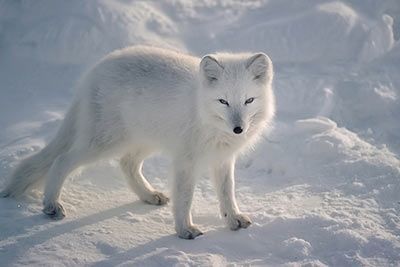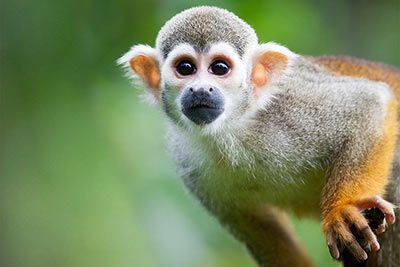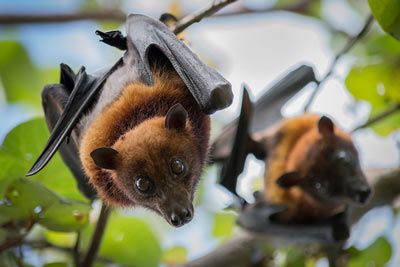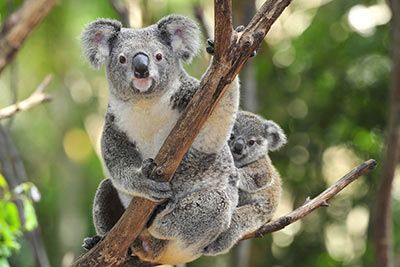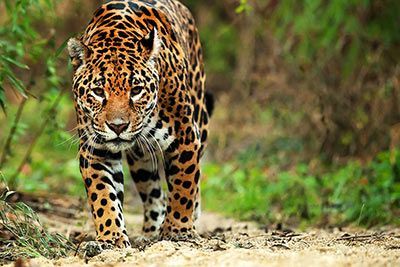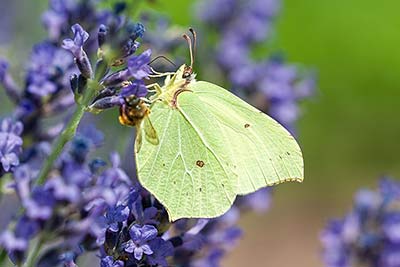Ring-Tailed Lemur
Ring-Tailed Lemur Facts
| Size | 15-18 inches (39-46 cm) |
| Speed | Up to 12 mph (20 km/h) |
| Weight | 4.8 to 7.7 pounds (2.2 to 3.5 kg) |
| Lifespan | 10-16 years |
| Food | Fruits, leaves, flowers |
| Predators | Birds of prey, wild dogs |
| Habitat | Madagascar |
| Order | Primates |
| Family | Lemuridae |
| Scientific name | Lemur catta |
| Characteristics | Primat with a long, black and white tail |
Main Characteristics
Lemurs are primates that live exclusively in Madagascar. The best known species is the ring-tailed lemur. Its most striking feature is their black and white striped tail and their face, which resembles a ghost with dark rimmed, yellow eyes and white fur markings. The following animal profile is primarily about the ring-tailed lemur.
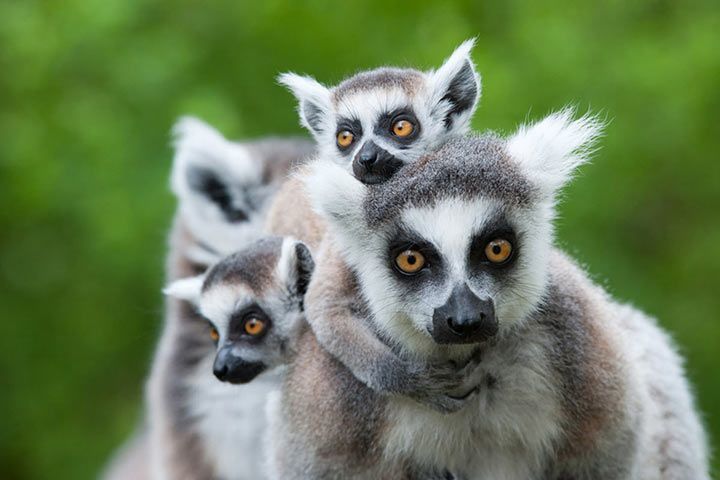
Species
There are approximately 100 different species of lemurs. For example the bamboo lemur, ruffed lemur, indri, black lemur and mouse lemur. The ring-tailed lemur is best known – thanks to King Julien, a character in the animated film Madagascar.
Distribution and Habitat
Lemurs live exclusively on the African island of Madagascar. They inhabit deciduous forests, thorn forests and rainforests. Ring-tailed lemurs can even survive in unforested areas like savannahs or mountainous regions.
Life Style
Most lemurs are nocturnal – approximately 75 out of 100 species. Ring-tailed lemurs are active during the day. They spend most of their time on the ground, up to 30%. This is unusual because almost all other species avoid the ground and rarely leave the trees.
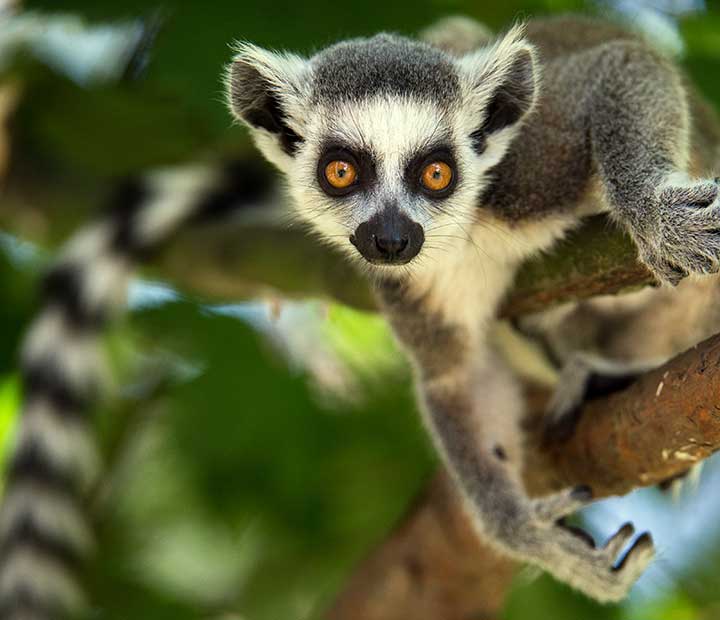
Anatomy and Appearance
Size and Weight
• Ring-tailed Lemurs
Ring-tailed lemurs have a body length of 15-18 inches (39-46 cm). Their tail is longer than their body. It reaches a length of 22-24 inches (56-62 cm). Their weight is 4.8 to 7.7 pounds (2.2 to 3.5 kg). There is not much difference between male and female lemurs.
• The Largest Lemur
The largest lemur is the Indri. It reaches a size of 25-28 inches (64-72 cm). From all lemur species it has the shortest tail. It measures 1.5 to 2 inches (4-5 cm). It weighs 14-20 pounds (6.5 to 9.5 kg).
• The Smallest Lemur
The smallest lemur is the dwarf mouse lemur. Its body is only 5 inches (12-13 cm) long, its tail is 6 inches (14-15 cm) and its weight is 1.5 to 2 ounces (43-55 grams).
Color
Lemurs can come in a variety of vibrant colors, such as vivid red, yellow, orange, or black and white. Ring-tailed lemurs always have gray coat.
Face
Ring-tailed lemurs have a distinctive face. It is white except for the long black nose and black-rimmed eyes. The iris is yellow.
Tail
Most lemurs have a tail that is at least as long as their body. In the ring-tailed lemurs, it has 13-15 white and black stripes each. No other lemur has such a striking pattern.
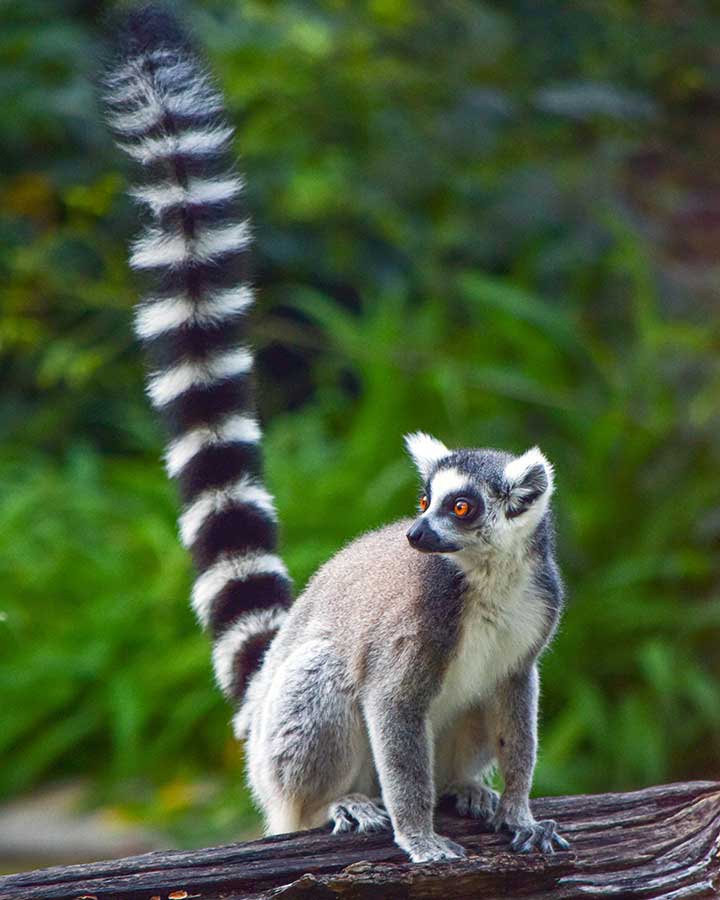
Diet
While most small lemurs are omnivores, the larger ones are more often herbivores. Ring-tailed lemurs are omnivores, but primarily eat fruit. They make up the majority of their diet. They adapt their menu depending on their habitat and season. When they don't get fruit, they also feed on leaves, flowers and buds. Sometimes hunt small animals such as spiders, cicadas, grasshoppers, chameleons and birds.

Behavior
Female Dominance
In ring-tailed lemurs (and most other lemurs), females are in charge. There are only a few species that strong female leaders, for example hyenas, meerkats, orcas, elephants, lions, bonobos, naked mole rats, horses, cows, pigs, bees, ants and termites.
Stink Fights
Lemurs are known for their „stink fights“. Yes, that's really what it's called. And yes, they really do smell very badly. First, lemurs put their tail under one armpit (there are scent glands there), so that the bad smell sticks to it. Then they eagerly wag their tail in the direction of their opponent. The lemur that can't stand the smell any longer and runs away, loses the fight. Imagine someone takes off his shirt, puts it under his armpits and holds it under your nose ...!
Sunbathing
Lemurs like to bathe in the sun. When the first warming beams of sunlight touch the earth, the ring-tailed lemurs love to enjoy a good sunbath. However, they do not lie down on their backs or their tummies. They prefer the lotus position. This is a posture that is primarily known from yoga. The animals sit on the ground, spread their arms and cross their legs. Yet, nobody has ever heard them hum a mantra (just a joke).
Communication
Ring-tailed lemurs often move on the ground. They use their tails to stay in touch and not lose sight of one another. They hold their tails upright like a flag, making it easy to spot them even when they're on the ground. This is their way of saying, "Hey, I'm over here!" to their fellow lemurs.
Are Lemurs Dangerous?
Lemurs look incredibly cute and seem to be friendly. If you happen to come across them in the wild, consider yourself fortunate. After all, they are rather shy and run away when they see people. However, if you get too close, they can feel threatened. As a result, they might cause severe injuries by biting and scratching. They can also transmit diseases. This is why you should never try to stroke a lemur.
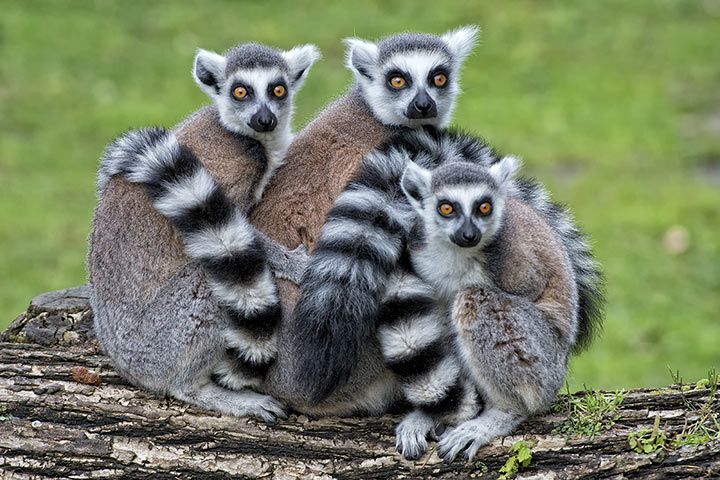
Senses and Abilities
Climbing
Lemurs can climb very well. They move skillfully from branch to branch using their hands and feet. Their tail is not a prehensile tail that they can use to hold on. But it helps them keep their balance.
Swimming
Lemurs can't swim (well). They avoid water.
Flying
There are small mammals that glide through the air and are often mistaken for lemurs. For example, the glider (a possum) and the Malayan flying lemur (which is a misleading name, in fact it's a colugo). They have a large membrane of skin on their arms. They give them the ability to glide several meters through the air towards the ground. As for the lemures: They can't fly. The only mammals that can actually fly are bats.
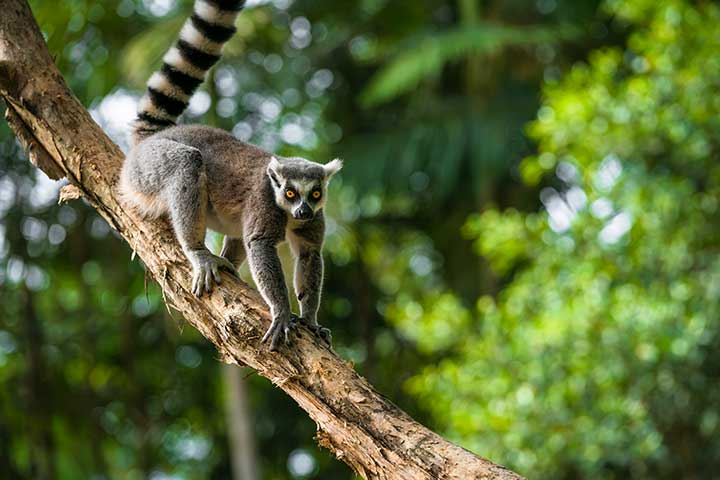
Life Expectancy
In the wild, lemurs usually do not live longer than 10-16 years.
Enemies and Threats
Natural Enemies
Ring-tailed lemurs have a few foes in the wild, such as fossas, which resemble short-legged cougars. Civet cats pose a threat to them, too. Additionally, they need to be wary of aerial predators like buzzards and hawks.
Human Impact
The biggest threat to lemurs is humans. The forests in which they live are cleared to make room for livestock grazing or to make charcoal. They are also captured to be sold illegally as pets. The IUCN classifies the species as critically endangered. There are probably only 2,000-2,500 animals left. The ring-tailed lemurs are also threatened and could soon face extinction.
Importance for the Ecosystem
Lemurs play an important role in their ecosystem. They eat fruits and spread their seeds through their droppings. They help new plants grow. The black-and-white ruffed lemur is unique: It is the largest animal in the world that pollinates plants. Yes, you've read that correctly. While it sips the nectar of the “Traveller's Tree” (Ravenala madagascariensis), it also pollinates its flowers.
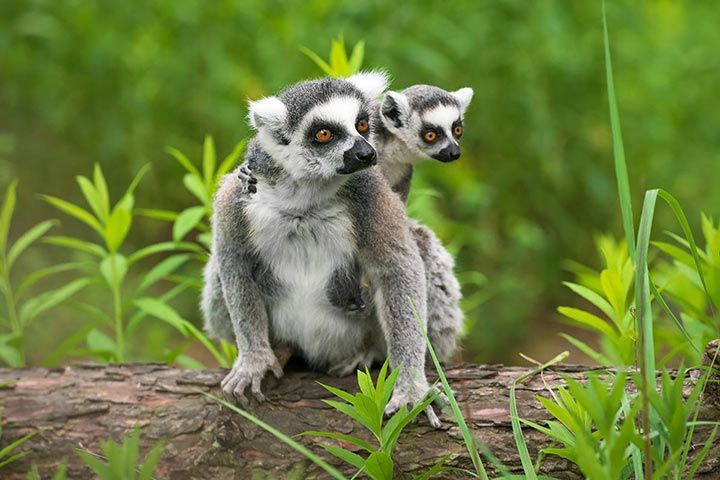
Reproduction
Gestation Period
135 days after mating, the female lemur gives birth to a baby.
Raising the Young
During the first few weeks, the little one clings to the fur of its mother. After about eight weeks it can eat solid food and after five months it can take care of itself.
Fun Facts
What Does the Name Mean?
The term “lemur“ originates from the Latin word for “ghost“. The natives of Madagascar thought that their ancestors lived on as ghosts in these little primates.
Lemurs in Madagascar
In the movie Madagascar there is a group of lemurs. King Julien is a ring-tailed lemur. Mort is a mouse lemur. Maurice is a species closely related to lemurs: an aye-aye.
Lemurs as Pets?
Is it suitable as a pet? Is that even allowed? We have some useful information on this topic in our article Lemurs as Pets.
The Ring-Tailed Lemur Is Related To:
- Aye-Aye
- Mouse Lemur
- Slow Lori
Animals in the Same Biome:
Related Articles:













